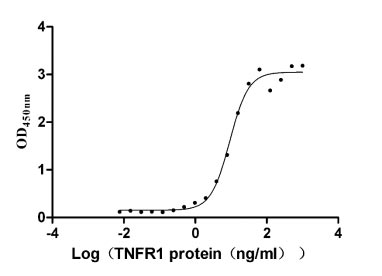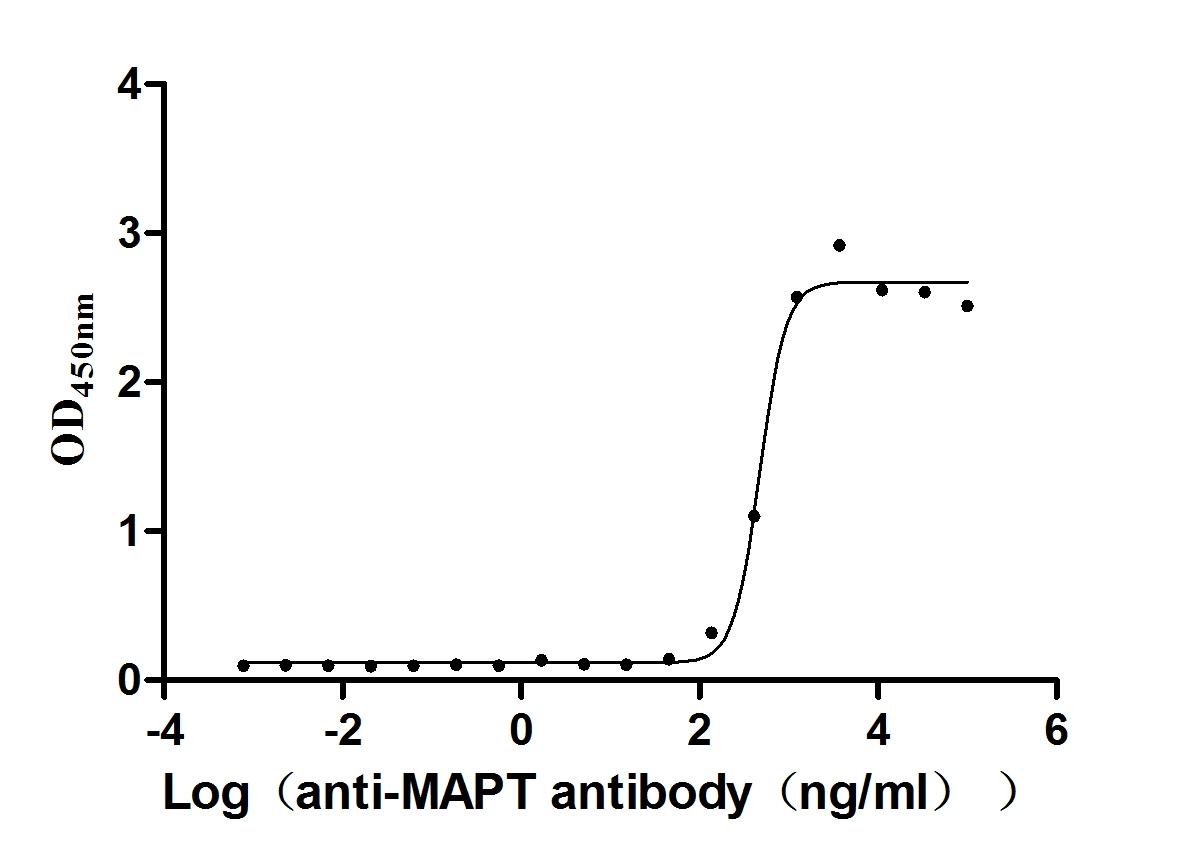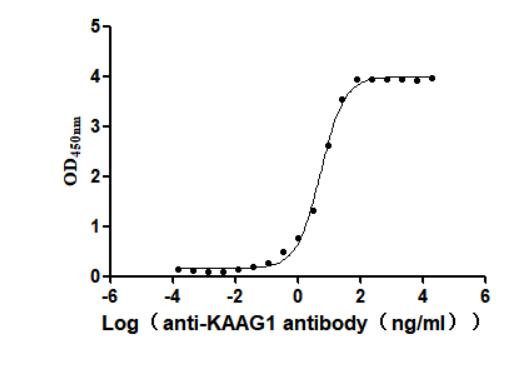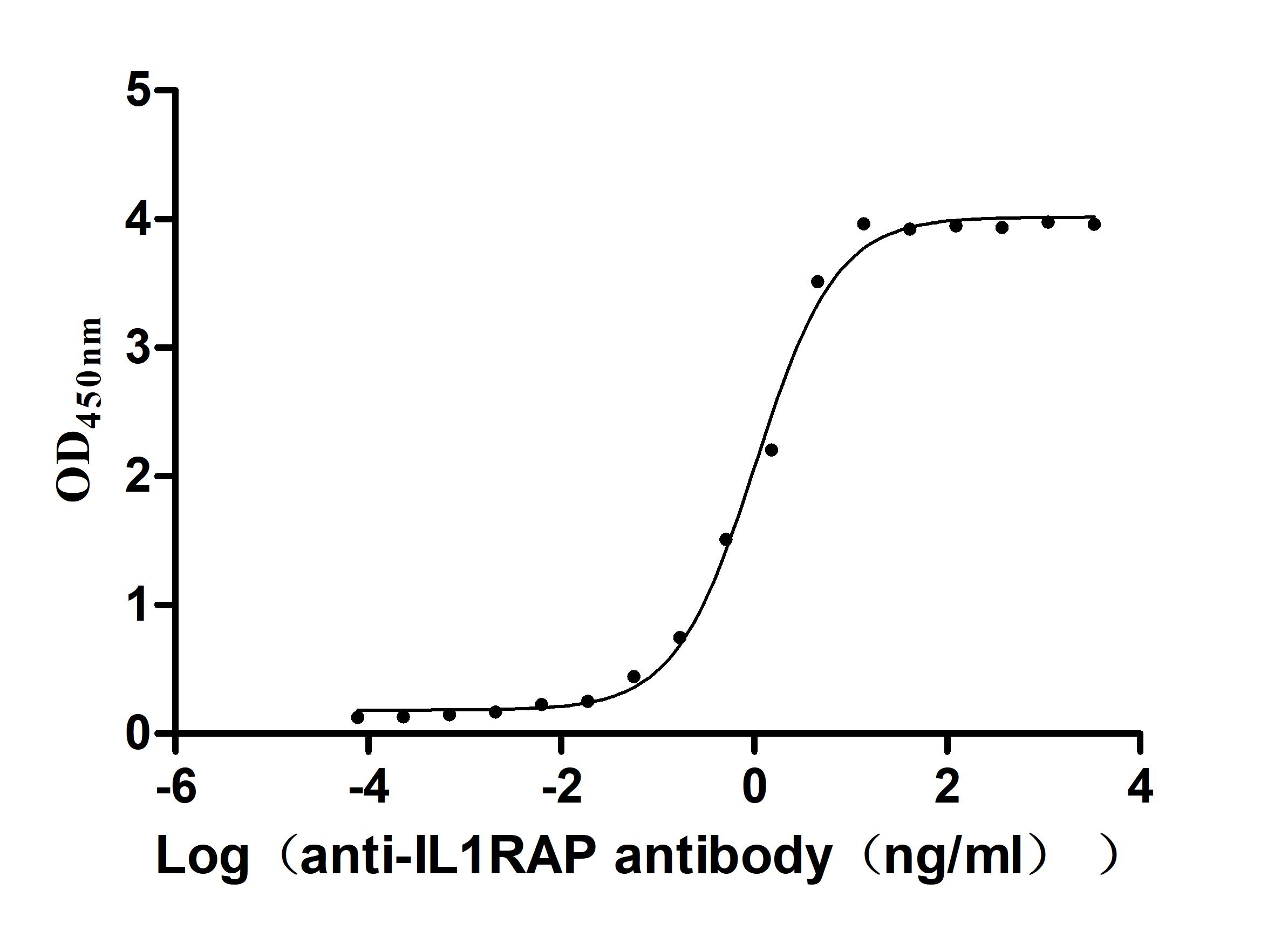Recombinant Human Polyglutamine-binding protein 1 (PQBP1)
-
货号:CSB-YP018594HU
-
规格:
-
来源:Yeast
-
其他:
-
货号:CSB-EP018594HU
-
规格:
-
来源:E.coli
-
其他:
-
货号:CSB-EP018594HU-B
-
规格:
-
来源:E.coli
-
共轭:Avi-tag Biotinylated
E. coli biotin ligase (BirA) is highly specific in covalently attaching biotin to the 15 amino acid AviTag peptide. This recombinant protein was biotinylated in vivo by AviTag-BirA technology, which method is BriA catalyzes amide linkage between the biotin and the specific lysine of the AviTag.
-
其他:
-
货号:CSB-BP018594HU
-
规格:
-
来源:Baculovirus
-
其他:
-
货号:CSB-MP018594HU
-
规格:
-
来源:Mammalian cell
-
其他:
产品详情
-
纯度:>85% (SDS-PAGE)
-
基因名:PQBP1
-
Uniprot No.:
-
别名:38 kDa nuclear protein containing a WW domain; Mental retardation; X linked 55; MRX55; MRXS3; MRXS8; Npw38; Nuclear protein containing WW domain 38 kD; OTTHUMP00000025808; Polyglutamine binding protein 1; Polyglutamine tract binding protein 1; Polyglutamine tract-binding protein 1; Polyglutamine-binding protein 1; PQBP 1; PQBP-1; PQBP1; PQBP1_HUMAN; RENS1; SHS; Sutherland Haan X linked mental retardation syndrome
-
种属:Homo sapiens (Human)
-
蛋白长度:Full Length of Mature Protein
-
表达区域:2-265
-
氨基酸序列PLPVALQTR LAKRGILKHL EPEPEEEIIA EDYDDDPVDY EATRLEGLPP SWYKVFDPSC GLPYYWNADT DLVSWLSPHD PNSVVTKSAK KLRSSNADAE EKLDRSHDKS DRGHDKSDRS HEKLDRGHDK SDRGHDKSDR DRERGYDKVD RERERDRERD RDRGYDKADR EEGKERRHHR REELAPYPKS KKAVSRKDEE LDPMDPSSYS DAPRGTWSTG LPKRNEAKTG ADTTAAGPLF QQRPYPSPGA VLRANAEASR TKQQD
-
蛋白标签:Tag type will be determined during the manufacturing process.
The tag type will be determined during production process. If you have specified tag type, please tell us and we will develop the specified tag preferentially. -
产品提供形式:Lyophilized powder
Note: We will preferentially ship the format that we have in stock, however, if you have any special requirement for the format, please remark your requirement when placing the order, we will prepare according to your demand. -
复溶:We recommend that this vial be briefly centrifuged prior to opening to bring the contents to the bottom. Please reconstitute protein in deionized sterile water to a concentration of 0.1-1.0 mg/mL.We recommend to add 5-50% of glycerol (final concentration) and aliquot for long-term storage at -20℃/-80℃. Our default final concentration of glycerol is 50%. Customers could use it as reference.
-
储存条件:Store at -20°C/-80°C upon receipt, aliquoting is necessary for mutiple use. Avoid repeated freeze-thaw cycles.
-
保质期:The shelf life is related to many factors, storage state, buffer ingredients, storage temperature and the stability of the protein itself.
Generally, the shelf life of liquid form is 6 months at -20°C/-80°C. The shelf life of lyophilized form is 12 months at -20°C/-80°C. -
货期:Delivery time may differ from different purchasing way or location, please kindly consult your local distributors for specific delivery time.Note: All of our proteins are default shipped with normal blue ice packs, if you request to ship with dry ice, please communicate with us in advance and extra fees will be charged.
-
注意事项:Repeated freezing and thawing is not recommended. Store working aliquots at 4°C for up to one week.
-
Datasheet :Please contact us to get it.
相关产品
靶点详情
-
功能:Intrinsically disordered protein that acts as a scaffold, and which is involved in different processes, such as pre-mRNA splicing, transcription regulation, innate immunity and neuron development. Interacts with splicing-related factors via the intrinsically disordered region and regulates alternative splicing of target pre-mRNA species. May suppress the ability of POU3F2 to transactivate the DRD1 gene in a POU3F2 dependent manner. Can activate transcription directly or via association with the transcription machinery. May be involved in ATXN1 mutant-induced cell death. The interaction with ATXN1 mutant reduces levels of phosphorylated RNA polymerase II large subunit. Involved in the assembly of cytoplasmic stress granule, possibly by participating in the transport of neuronal RNA granules. Also acts as an innate immune sensor of infection by retroviruses, such as HIV, by detecting the presence of reverse-transcribed DNA in the cytosol. Directly binds retroviral reverse-transcribed DNA in the cytosol and interacts with CGAS, leading to activate the cGAS-STING signaling pathway, triggering type-I interferon production.
-
基因功能参考文献:
- Results from a study on gene expression variability markers in early-stage human embryos shows that PQBP1 is a putative expression variability marker for the 3-day, 8-cell embryo stage. PMID: 26288249
- The WW domain belonging to polyglutamine tract-binding protein 1 (PQBP1) is of particular interest due to its direct involvement in several X chromosome-linked intellectual disabilities, including Golabi-Ito-Hall (GIH) syndrome, where a single point mutation (Y65C) correlates with the development of the disease. The mutant cannot bind to its natural ligand WBP11, which regulates mRNA processing PMID: 27456546
- Our data strongly support a gain-of-function pathogenic mechanism of PQBP1 c.459_462delAGAG and c.463_464dupAG mutations, and suggest that therapeutic strategies to restore FMRP function may be beneficial for those patients PMID: 28073926
- results suggest that the interaction between PQBP1 and WBP11 negatively modulates the U5-15kD binding of PQBP1 by an allosteric mechanism PMID: 27314904
- Study found that PQBP1 directly binds to reverse-transcribed HIV-1 DNA and interacts with cGAS to initiate an IRF3-dependent innate response. PMID: 26046437
- Mutations in the PQBP1 gene prevent its interaction with the spliceosomal protein U5-15 kD. PMID: 24781215
- The results of this study addressed that the relationship between gene dose and phenotype relationship of dPQBP1 and investigated the mechanism responsible for the lifespan shortening' PMID: 22901698
- These data demonstrate a role for PQBP1 in the modulation of stress granules. PMID: 21933836
- Data show that the PQBP1 mutation was found in 3 brothers with a phenotype comprising MR, short stature, lean body and microcephaly. PMID: 21315190
- Evidence for a functional involvement of the four mutations affecting ATRX (p.1761M4T), PQBP1 (p.155R4X), and SLC6A8 (p.390P4L and p.477S4L), in the etiology of intellectual disability. PMID: 21267006
- Whole gene duplication of the PQBP1 gene in syndrome resembling Renpenning. PMID: 21204222
- mutations in PQBP1 caused variable loss of cell adhesion from impaired vesicle trafficking disrupts the neuroepithelial lining or neuronal migration and underlies periventricular heterotopia formation PMID: 20886605
- frameshift mutations in the PQBP-1 gene lead to expression of mutants lacking the ability to interact with U5-15kD PMID: 20307692
- Y65C missense mutation in the WW domain of the Golabi-Ito-Hall syndrome protein PQBP1 affects its binding activity and deregulates pre-mRNA splicing PMID: 20410308
- An evaluation of X-linked mental retardation (XLMR) pathology of PQBP1 mutations demonstrated nonsense-mediated mRNA decay and enhance exclusion of the mutant exon. PMID: 19847789
- Mutations in the polyglutamine binding protein 1 gene cause X-linked mental retardation PMID: 14634649
- mutations cause Renpenning syndrome and X-linked mental retardation with microcephaly PMID: 15024694
- Mutations in the polyglutamine-binding protein 1 gene is associated with X-linked mental retardation PMID: 15355434
- dysfunction of PQBP-1 induces mitochondrial stress, a key molecular pathomechanism that is shared among human neurodegenerative disorders PMID: 16104847
- Pathogenic frameshift mutations in PQBP1 are rare in mentally retarded patients lacking specific associated signs; the 21 bp in-frame deletions may be non-pathogenic, or alternatively could act subtly on PQBP1 function. PMID: 16493439
- Data suggest that the SIPP1-PQBP1-induced nuclear inclusions are distinct from the protein aggregates that are associated with polyglutamine diseases and represent dynamic nucleoplasmic heteropolymers of SIPP1 and PQBP1. PMID: 18599155
- Results suggest that pqbp-1.1 is involved in lipid metabolism of intestinal cells, and that dysfunction of lipid metabolism might underlie lean body, one of the most frequent symptoms associating with PQBP1-linked mental retrdation patients. PMID: 19119319
显示更多
收起更多
-
相关疾病:Renpenning syndrome 1 (RENS1)
-
亚细胞定位:Nucleus. Nucleus speckle. Cytoplasmic granule.
-
组织特异性:Widely expressed with high level in heart, skeletal muscle, pancreas, spleen, thymus, prostate, ovary, small intestine and peripheral blood leukocytes.
-
数据库链接:
HGNC: 9330
OMIM: 300463
KEGG: hsa:10084
STRING: 9606.ENSP00000218224
UniGene: Hs.534384
Most popular with customers
-
Recombinant Human Tumor necrosis factor receptor superfamily member 1A (TNFRSF1A), partial (Active)
Express system: Mammalian cell
Species: Homo sapiens (Human)
-
Recombinant Human Heat-stable enterotoxin receptor (GUCY2C), partial (Active)
Express system: Mammalian cell
Species: Homo sapiens (Human)
-
Recombinant Human Insulin growth factor-like family member 1 (IGFL1) (Active)
Express system: Mammalian cell
Species: Homo sapiens (Human)
-
Recombinant Mouse Microtubule-associated protein tau (Mapt) (Active)
Express system: Mammalian cell
Species: Mus musculus (Mouse)
-
Recombinant Mouse Transthyretin (Ttr) (Active)
Express system: Mammalian cell
Species: Mus musculus (Mouse)
-
Express system: Mammalian cell
Species: Homo sapiens (Human)
-
Recombinant Human Kidney-associated antigen 1(KAAG1) (Active)
Express system: Baculovirus
Species: Homo sapiens (Human)
-
Recombinant Macaca fascicularis Interleukin 1 receptor accessory protein(IL1RAP), partial (Active)
Express system: Mammalian cell
Species: Macaca fascicularis (Crab-eating macaque) (Cynomolgus monkey)




















